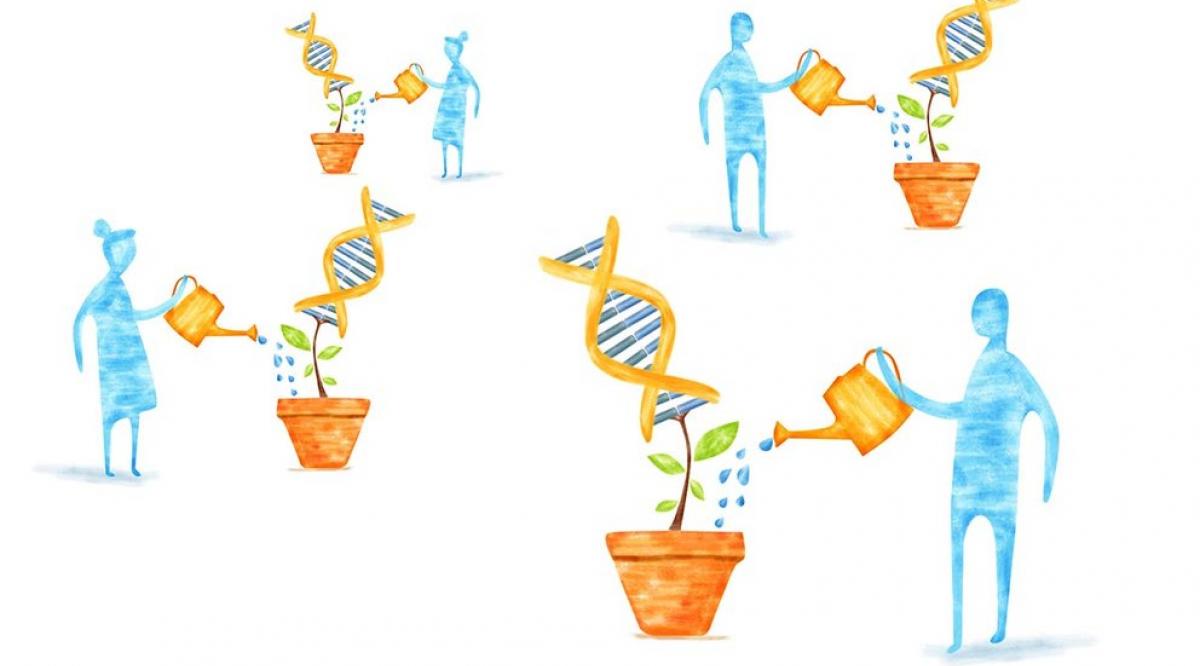Strapped for grant funds and facing ever-increasing costs, medical researchers are learning to share resources within their own institutions and with other institutions across the country.
Sharing research resources is “a no-brainer,” says Curt Civin, MD, professor of pediatrics and physiology, associate dean for research, and director of the Center for Stem Cell Biology and Regenerative Medicine at University of Maryland School of Medicine. “There are expensive instruments that few institutions use, but a larger group of institutions could purchase and use them more efficiently. Not every institution needs to purchase and operate a cryo-electron microscope to use a couple times a year, for example, so there would be a huge cost saving if multiple institutions pooled resources.”
Improving quality is another argument for collaborating. “An instrument that is rarely used needs updating and maintenance. The quality of the measurements can be greatly improved by expert operation, interpretation, maintenance, and modifications as the state of the art evolves,” adds Civin, who is also chair of the Group on Research Advancement and Development (GRAND), the AAMC’s professional development group for research deans. “If instruments are shared, used daily, and kept updated, the quality of their measurements can be maintained.”
“There are competitive challenges, but institutions need to trust each other, with everyone contributing.. It’s not a question of doing more with less, but doing more with the same amount.”
Curt Civin, MD
University of Maryland School of Medicine
Civin points to the Mid-Atlantic Shared Services Consortium (MASSC) as an example of sound financial stewardship and collaborative science through resource sharing. MASSC provides researchers with reciprocal access to specialized technical services, equipment, and expertise available at these participating institutions:
- University of Maryland Greenebaum Comprehensive Cancer Center
- Georgetown University Lombardi Comprehensive Cancer Center
- Johns Hopkins Sidney Kimmel Comprehensive Cancer Center
- University of Virginia Cancer Center
Each institution bills investigators at other MASSC institutions the same amount paid at the home institution.
“The bottom line is that state-of-the-art instruments are very expensive and the technology is moving very rapidly,” explains Mark Chance, PhD, vice dean for research and professor of cancer research at Case Western Reserve University (CWRU) School of Medicine and director of the Center for Proteomics and Bioinformatics at CWRU. “To get access to the latest toys involves pulling together to provide a robust base of users. This make the dollars go farther. It’s like flying a plane half full. You want to sell those empty seats.”
Case Western Reserve’s Center for Synchrotron Biosciences (CSB) is working to expand the fields of structural biology and biophysics and train the next generation of science-based researchers. The CSB makes X-ray beamline resources (including facilities for macromolecular crystallography, synchrotron X-ray footprinting, and X-ray spectroscopy) available to investigators at other institutions who are examining molecular details of cellular function.
The Center for Regenerative Medicine (CReM) at Boston Medical Center also benefits from sharing resources and expertise. CReM researchers are studying a human stem cell population known as induced pluripotent stem cells (iPSCs) that represent renewable source cells. The CReM shares reagents, data sets, and knowledge with other research institutions. CReM’s original iPSC repository of 300 cell lines is now maintained as a stem cell bank with 1,000 cell lines for sharing nationwide through the support of a grant jointly awarded by the National Institutes of Health and the National Center for Advancing Translational Sciences (an NIH/NCATS U01 grant).
The case to collaborate
Sharing resources is an important component of keeping research competitive and cutting edge at academic research centers that have centralized their cores, says Sheenah M. Mische, PhD, senior director, Division of Advanced Research Technologies, and associate professor, Department of Pathology at NYU Langone Health.
“We’re moving from individual excellence to collective excellence. It’s less about money or competition, and it’s better for science.”
Stephen Heinig
Association of American Medical Colleges
Without shared resources, she explains, research core laboratories “struggle to achieve sustainable funding, connect with potential users, replace and maintain high-end instrumentation, and support the professional development of their staff.”
Unless there is a competitive culture, the case for sharing resources is obvious, says Civin. “Some institutions want to make discoveries before other institutions, so when they apply for grants, they can say ‘we were the first to discover this.’”
But, he adds, “We’re all trying to do the same thing overall—make discoveries and advance health. There are competitive challenges, but institutions need to trust each other, with everyone contributing. It’s not a question of doing more with less, but doing more with the same amount.”
The rewards go beyond saving money, Civin continues. “Suppose I’m writing a grant application, and I need to do a fancier analysis of my data than I know how to do. I can go to an expert at a core lab, complete the discovery faster and more efficiently, and get the grant.”
Chance notes that the “fear of the loss of control” is one reason why more researchers don’t collaborate. Sharing resources may be seen as “a lost opportunity to do something myself,” he says. “Competition and [wanting] prestige exacerbate the situation. But being open to sharing has benefits. If institutions pull together, they can get the best players in the region [and compete internationally.]”
Stephen Heinig, AAMC director of science policy, says that more scientists are recognizing the advantages of resource sharing. “A cultural change” is occurring, he observes. “We’re moving from individual excellence to collective excellence. It’s less about money or competition, and it’s better for science.”
